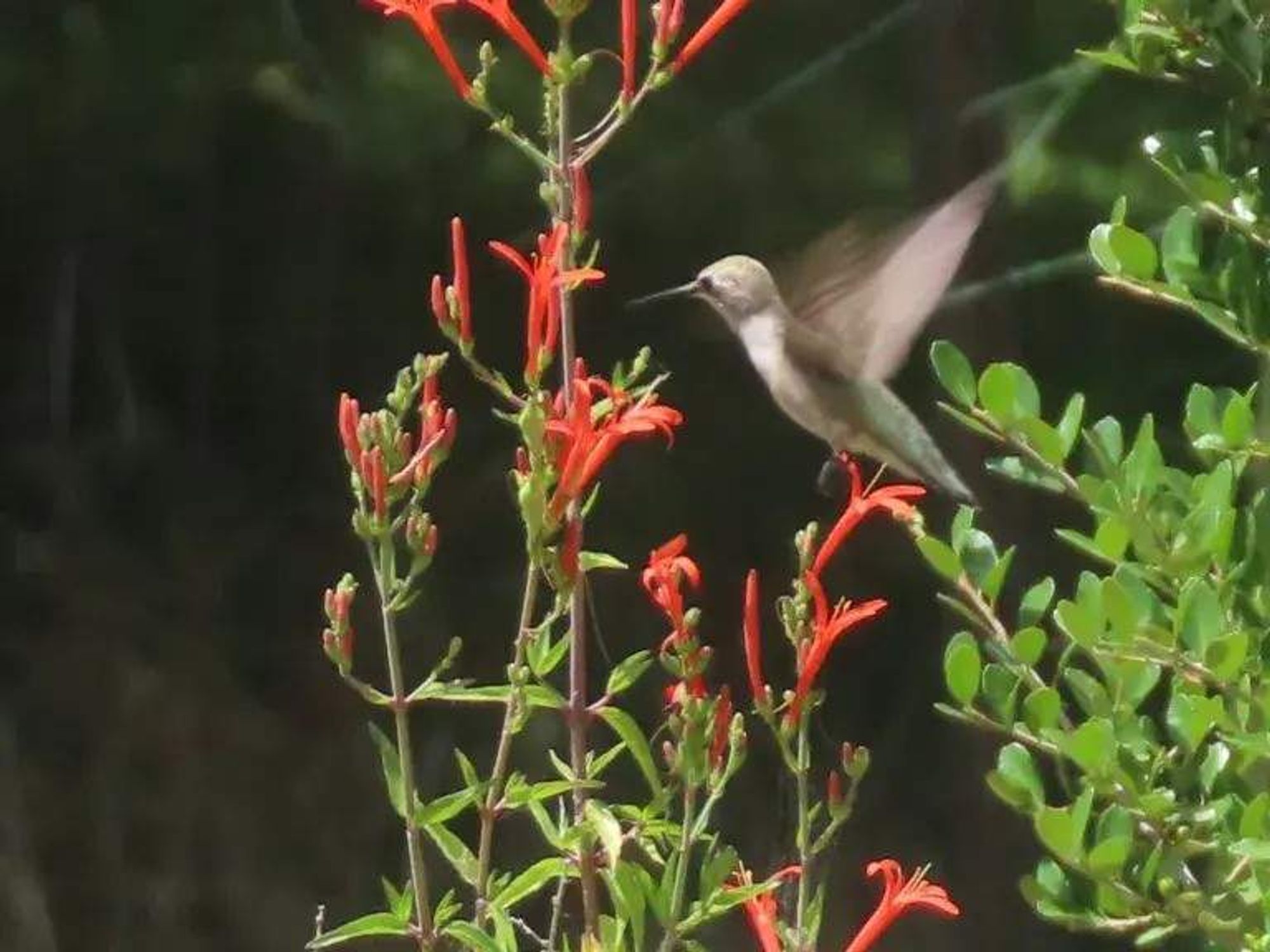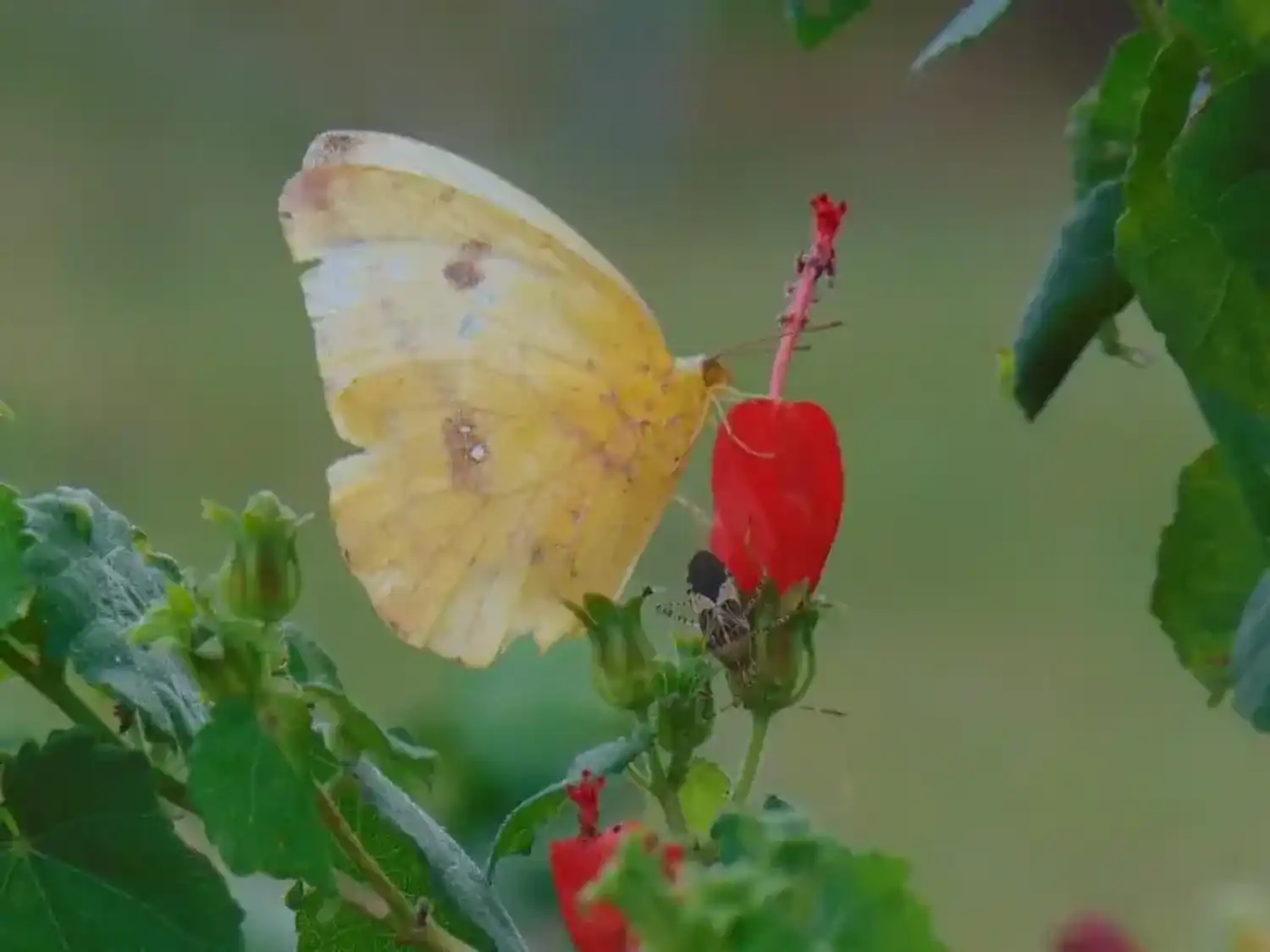Texas, Born and Raised
H-E-B stocks native Texas plants in Pollinators and Prairies initiative

A hummingbird enjoys a taste of Flame Acanthus, which is native to Texas.
People love saving the bees, but many only have one idea of a bee, and it has hurt biodiversity. Texans have a chance to broaden their scope to other pollinators — like native bees, butterflies, moths, and hummingbirds — with help from H-E-B and Texas Parks and Wildlife Foundation (TPWF) this October.
The Pollinators and Prairies program is a multi-pronged initiative that lets Texans get in on the conservation action, with help from both corporate and conservation partners. Initiatives include funding scientific research, engaging in ground restoration, and even sending San Antonians home with native plants. Whether or not they have green thumbs to work with, a new app should help ensure those native plants grow strong.
A release by TPWF points out that pollinators help create one out of every three bites of food we take, and that monoculture and other land development issues are eliminating diverse land. "Researchers at Texas A&M have documented that Texas loses over 1,000 acres of land to development and fragmentation every day," it states.
But it also offers some small-scale solutions: planting "pocket prairies," and adding native plants to existing landscaping projects are places individuals can start.
H-E-B is featuring native plants at more than 200 stores from October 14-30. The 28 San Antonio stores participating can be found here. Shoppers can rest assured that real expertise has gone into selecting these species; the task was executed by the Native Plant Society of Texas.
The following plants are available for purchase:
- Coreopsis tinctoria, or Plains Coreopsis ‘Early Sunrise’
- Dichondra argentea, or Silver Ponysfoot ‘Silver Falls’
- Echinacea purpurea, or Purple Cone Flower ‘Magnus Coneflower’
- Conoclinium dissectum, or Gregg’s Mistflower
- Anisacanthus quadrifidus, or Flame Acanthus
- Muhlenbergia capillaris, or Gulf Muhly
- Malvaviscus arboreus, or Turk’s Cap
- Melampodium leucanthum, or Blackfoot Daisy
- Pavonia lasiopetala, or Rock Rose
- Rudbeckia fulgida, or Perennial Black-eyed Susan ‘Goldstrum’
- Salvia coccinea, or Scarlet Sage ‘Summer Jewel’
- Salvia greggii, or Autumn Sage ‘Furmans Red’ and ‘Lipstick’
- Salvia roemeriana, or Cedar Sage
- Glandularia bipinnatifida, or Prairie Verbena

If Texans would like to take their native plant sourcing into their own hands, they can find help on a new app launching in 2025. It'll help users decide which plants or seed mixes to buy depending on their region, and then it'll teach them how to plant and maintain an area that is friendly to native pollinators.
In addition to H-E-B's more layman-accessible offers, there are some additional projects going on behind the scenes within the initiative. One is researching the habitat of the American bumblebee and the cuckoo bumble bee, both of which live in or on the ground and are being searched for by "conservation K-9s." Another is supplying public and private landowners across 400 acres with prairie restoration materials like with native wildflower and grass seed.
According to the release, this project includes work from the following conservation partners: Lady Bird Johnson Wildflower Center, Native Plant Society of Texas, Native Prairies Association of Texas, Texas Parks and Wildlife Department, Texas Wildlife Association and WHF. If all the green is going to your head, note that natural gas company Phillips 66 is a supporting sponsor. H-E-B is a presenting partner, having kicked the whole thing off with funding from its environmental initiative Our Texas Our Future.
More information about the initiative is available at pollinatorsandprairies.org.
